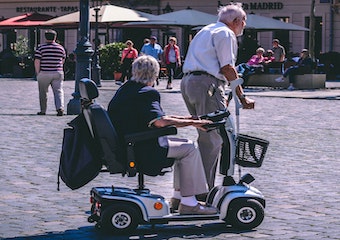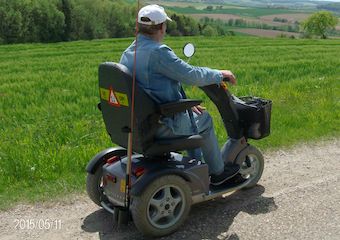Updated: 09 May 2020
Real Grass vs Artificial Grass
If you dislike toiling in the garden, mowing the lawn, and just generally investing time and money in the upkeep, you should consider artificial grass. Natural grass requires a lot of tending to, and this can become tedious for many. However, most people do enjoy having natural grass under their feet as they take a walk.
People living in apartment complexes and condominiums could opt for artificial turf since it does not require watering. It is also hypoallergenic and is excellent for people with allergies.
Real grass and synthetic grass have their pros and cons, and you need to understand both before making a final decision.
Constant Care of Normal Grass
Natural grass needs extra attention at all times. It must be mowed in the summer and raked in the fall. With the continuous mowing and cutting, you also need to keep it healthy with fertilizer, soil additives, water, and minerals. For irrigation, you may also need to add drip water supply. There is also a high chance of insects, rodents, and other fleas and pests infesting real grass. Cats, dogs, and other pets may also frequent your garden and lawn and defecate in the open.
None of this holds true for artificial grass. Artificial turf does not need constant care, neither does it need sunlight, irrigation, fertilizer, or insecticides. Since it is not real, you can hose off dirty or trampled grass and make it look clean and fresh again. Also, artificial turf does not hold on to dirt and muck. A quick cleaning and you can have it spotless again. Since soil is not a concern, you can easily install artificial turf indoors for a green look. You may need to occasionally run a rake through the plastic grass to straighten out the matting.
Cost of Artificial Grass
Synthetic turf is more expensive than real sod. It is laid per square foot, and the price would increase depending on the area it covers. To install synthetic turf, you need to dig up the garden, put in a layer of sand, level it, and lay down a matting of rubber pellets. The artificial turf has to be arranged on top of this foundation. Doing this process for the first time is expensive. However, the cost of the upkeep of real grass is recurring, since a real garden needs constant care and maintenance.

Water connections, soil health, fertilizer, weeding, plantation, insect control, and irrigation can take out a chunk of money from your household budget per month. Artificial turf has none of these concerns. Basically, you need to decide which expenses you would prefer in the long term. Since fake grass has little to no maintenance, you can skip the added costs altogether. Good quality artificial grass has a long shelf life and can easily last up to 20 years without losing on its colour, quality, or shine. You also get UV protected artificial turf against sun damage.
Look and Feel of the Artificial Grass
Most people enjoy the smell and feel of real grass. The hours spent in the sun are a comfort to many. The look and feel of artificial turf are different from real grass. Artificial grass is stronger and more resistant to the feet. It does not get soggy or come off while walking. It also does not impart any colour to your feet as you walk on it. Real grass does not make a rustling sound when walked on, whereas artificial grass does make a slight swishing sound.
While expensive high-quality artificial turf looks exactly like the real deal, it does not feel the same. Some manufacturers have tried to replicate the yellowing of actual grass fibres and added green, brown, and yellow hues to synthetic turf. It gives fake grass a variegated, natural look and feel. Lower quality and cheaper fibres can look fake. They also have a lower shelf life of eight to ten years.
Environmental Impact
There are benefits and drawbacks to real and artificial grass. Real grass helps clear the water and aids in groundwater tables. Artificial grass does neither of these things. While real grass has a cooling effect on the ground, artificial grass (due to its synthetic nature) tends to heat the room up a little. This may lead to an increase in air conditioning costs. Synthetic turf is a petroleum-based product that produces waste during manufacturing, whereas real grass helps protect the environment, increase oxygen, and filters water, and air.
With either type of grass, there are benefits and drawbacks. You should decide your ideal turf-type based on your requirements and those of your family.
Related Reads
How to Use a Mobility Scooter
Updated: 23 Nov 2019 How to Use a Mobility Scooter? A mobility scooter is a similar vehicle to a wheelchair, which is also configured like a motor-scooter. It is an electrically power-operated vehicle which works on four or five wheels. It has a seat with...
How do Mobility Scooter Controls Work
Updated: 26 Oct 2019 How do Mobility Scooter Controls Work? Controls of a mobility scooter are slightly different from those of other vehicles like cars, bicycles, and motorbikes. Like cars, bikes also work at helping to move from one place to another....
How to Charge a Mobility Scooter
Updated: 13 Aug 2019 How to Charge a Mobility Scooter The mobility scooter has helped many lives of the differently-abled as well as senior citizens. The wheelchair was well-utilized many years ago, but nowadays, mobility scooters have turned their lives...



